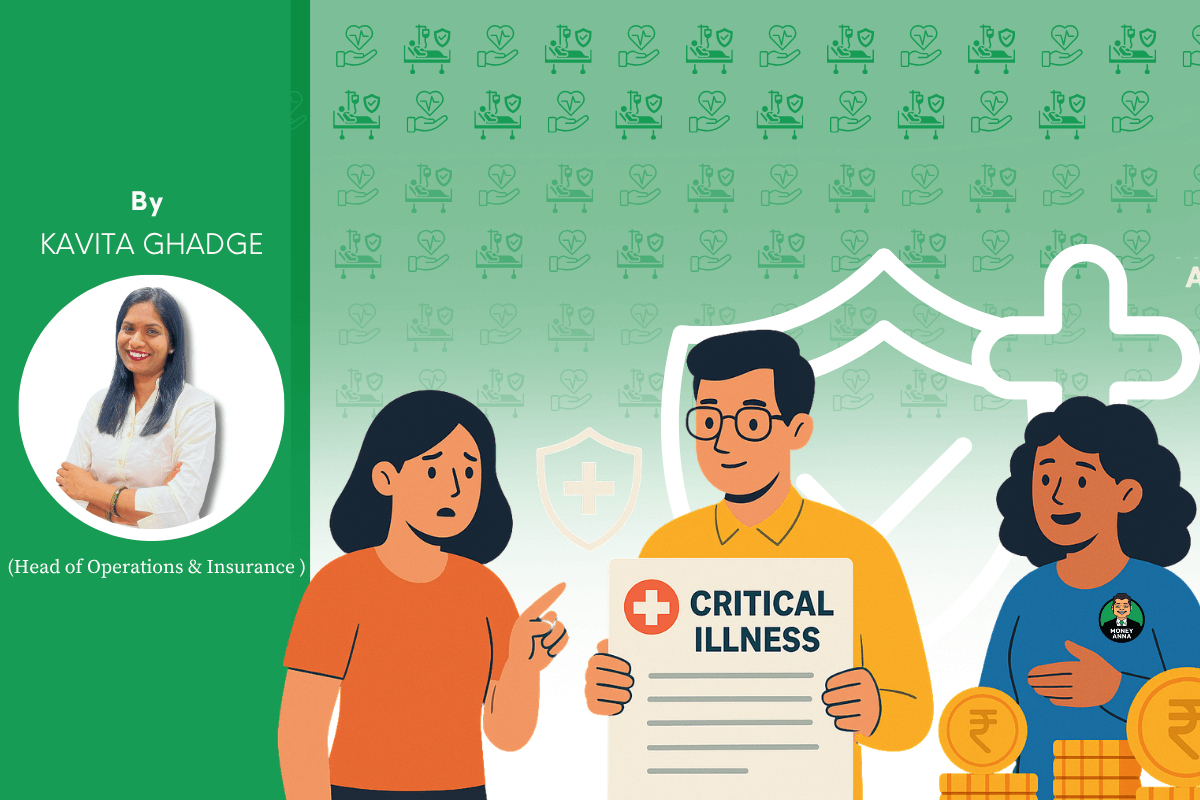What’s in the blog?
This blog gives you a clear, step-by-step guide to filing insurance claims in India—from gathering documents and submitting forms to follow-up and approval. It’s designed to remove the guesswork, so you can ease the stress and get your claim processed smoothly and confidently.
Table of Contents
Filing an insurance claim can feel overwhelming and, at times, even distressing. I’ve seen people run from pillar to post just to get a basic claim settled. Even worse, many people just give up entirely and bear all the burden themselves despite having a valid insurance policy. That’s not just sad but unfortunate.
Most of these struggles come due to a simple lack of awareness. When you understand the claims process, you can save yourself both stress and money.
As a professional in the insurance sector, I believe it’s my responsibility to share the right information—clearly and transparently. So, let me walk you through a step-by-step guide to filing insurance claims in India.
Understanding Your Insurance Policy
Before you ever need to file a claim, it’s essential to have a solid understanding of your insurance policy. This might seem obvious, but you’d be surprised at how many people don’t read through the details. Take the time to go through the terms, conditions, exclusions, and inclusions so that you know exactly what’s covered and what isn’t. This will prevent any unpleasant surprises later on when you need the coverage the most.
Here are some key things to check in your health insurance policy before hospitalization:
- Sum Insured: This is the maximum amount your insurer will pay. Understanding this will help you manage your finances in case of a major treatment.
- Covered Treatments & Conditions: Make sure the treatments you need are covered under your policy, and be aware of any exclusions.
- Network Hospitals: Check if your preferred hospital is on the insurer’s list of network hospitals for cashless claims.
- Room Rent Limit: Some policies have a cap on room rent, so make sure you are aware of any such limitations.
- Waiting Periods: Some treatments or pre-existing conditions may have a waiting period before coverage kicks in, so check these details in advance.
- Pre-authorization Requirements: Certain treatments may require approval from the insurer before you proceed. Understanding this will ensure there are no delays in your treatment.
It’s a good idea to keep a copy of your policy, either in digital or physical form, so you can refer to it when needed.
Types of Insurance Claims
When it comes to settling insurance claims for medical treatment and hospitalization, there are generally two types of processes:
Cashless Claims
Cashless claims allow you to receive treatment at a network hospital without needing to pay upfront. Instead, the insurance company settles the bill directly with the hospital.
- Planned Hospitalization: If your hospitalization is planned, make sure to inform your insurer at least 48 hours in advance.
- Emergency Hospitalization: If it’s an emergency, inform the insurer within 24 hours of being admitted.
The cashless claim process involves choosing a network hospital, informing your insurer about the hospitalization, paying the required deposit (if any), and submitting your health e-card and ID proof at the hospital TPA (Third-Party Administrator) desk. The hospital will then request pre-authorization from your insurer.
You will receive two approvals:
- Initial approval (Pre-authorization): This should happen within 1 hour.
- Final approval (Discharge approval): This should be given within 3 hours of discharge.
After discharge, don’t forget to follow up with the insurer to get your hospital deposit refunded. This usually takes up to 15 days.
Reimbursement Claims
In cases where you pay for your treatment upfront, reimbursement claims allow you to get back the amount you paid. These claims are typically used when you receive treatment at a non-network hospital or if your policy doesn’t have cashless facilities.
There are two primary types of reimbursement claims:
- Pre & Post-Hospitalization Reimbursement: This covers expenses incurred before and after your hospitalization (like tests and follow-up consultations) for 60 to 90 days, depending on the policy.
- Full Reimbursement (Non-Network Hospital): If you receive treatment at a non-network hospital, you can file a reimbursement claim for the full amount within 30 days of discharge.
To file a reimbursement claim, make sure you inform the insurance company within 24 hours of hospitalization. After you receive treatment and pay your bills, gather all original documents, including medical bills, discharge summaries, prescriptions, medical reports, and any test results. You’ll need to fill out the claim forms provided by the insurer—Form A (filled by you) and Form B (signed by the hospital). Once completed, submit the forms and documents to the insurer. Claims are typically processed within 10-15 days.
Claim Settlement
Once your claim is approved, you will receive your settlement in one of two ways:
- Cashless Claim: The insurer will pay the hospital or service provider directly.
- Reimbursement Claim: The insurer will reimburse you the claimed amount.
It’s crucial to verify the final settlement to ensure it aligns with your policy coverage and that there are no surprises.
Insightful Experience
One of our clients was admitted to hospital for abdominal pain. He not only chose a network hospital but also promptly informed us about the hospitalization.
Our team got into action as soon as we received the information. We sent him an email draft for hospital intimation, which he then forwarded to the insurance company from his registered email. This ensured that the claim process was initiated smoothly.
Thanks to his prompt action and our timely follow-up with the hospital, his treatment was completed successfully, and he was discharged without any issues. Within 15 days, his cashless claim of ₹71,162 was approved and settled in July.
Later, the client approached us with follow-up consultations and medical bills. We assisted him by sending the necessary claim forms and documents checklist. Once he submitted everything, we compiled and submitted the claim to the insurance company. In September, ₹29,419 was reimbursed to him.
In December, more follow-up consultations resulted in additional medical bills, which we again helped him process. The claim for ₹4,022 was settled without any delays.
Finally, in February, the client had more follow-up consultations, and we once again processed the claim for ₹12,774.
This case highlights the importance of timely communication and efficient documentation. By staying organized and following the claims process step by step, our client was able to manage his medical expenses smoothly and efficiently.
What to Do If Your Claim Is Rejected?
If your claim is rejected, don’t panic. First, request a reason for the rejection and cross-check it against your policy terms. If you feel the rejection is unjust, there are several ways to proceed:
- Resubmit: Submit the claim again with additional supporting documents if needed.
- Grievance Redressal: Reach out to the insurer’s grievance team to dispute the decision.
- Escalation: If the issue remains unresolved, you can escalate it to the Insurance Ombudsman or the Insurance Regulatory and Development Authority of India (IRDAI) for further resolution.
My Take
Filing an insurance claim doesn’t have to be a stressful process. By understanding your policy, staying organized, and following up diligently, you can ensure a smoother experience.
If you are facing any challenges in filing your insurance claim or need to understand any complicated conditions of your policy, team MoneyAnna is always ready to support you. Reach out for any help without a second thought.




